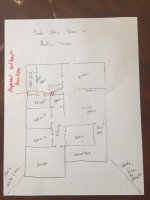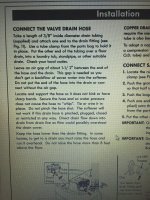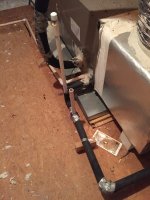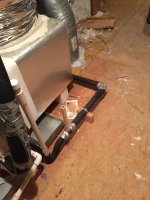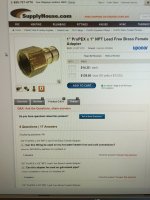David S
Member
Hello members! This is my first post here but I have been reading alot of the posts and like everybody looking for ideas. I want to install a softener in my mother in laws house so I need it to be right! Here is what I am looking at doing and seeking advice on.
There is no loop in her house so I need to find an appropriate home for the softener. The water line and drain line coming into the house are on opposite sides of the home so I don't have access to a drain in the garage area and no bathrooms back up to any of the garage walls I could use. My options are the attic which I have pretty much ruled out due to carrying bags of salt up there. My next option is the laundry room so I can use the washing machine drain line for the softener and just get the main water line to the laundry room. If I do that my plan is to cut the water line where it comes into the house which I believe is 1" PVC (positive it's pvc but unsure if it's 1 inch yet) and run it up the wall in the garage to the attic and over to the laundry room and down that wall to the softener and back outside. What would be the best material for the run in the attic? PVC? Copper? Pex? I am a fairly avid DIYer having installed my softener without a loop and a friends with a loop. I would be more comfortable using PVC but that is many glued joints with the potential of failing in the attic and flooding her home making for a mad mother in law . I'm thinking the PEX would be best because I could run one continuos line from outside to the softener and my only connections or weak points would be at the softener and in the ground where I cut the main line? If PEX how do I go from the PVC to Pex? What do you guys think? I am in Austin Texas so the attic gets hot in the summer but seldom if ever freezes in the winter. Thanks for the ideas and help!
. I'm thinking the PEX would be best because I could run one continuos line from outside to the softener and my only connections or weak points would be at the softener and in the ground where I cut the main line? If PEX how do I go from the PVC to Pex? What do you guys think? I am in Austin Texas so the attic gets hot in the summer but seldom if ever freezes in the winter. Thanks for the ideas and help!
There is no loop in her house so I need to find an appropriate home for the softener. The water line and drain line coming into the house are on opposite sides of the home so I don't have access to a drain in the garage area and no bathrooms back up to any of the garage walls I could use. My options are the attic which I have pretty much ruled out due to carrying bags of salt up there. My next option is the laundry room so I can use the washing machine drain line for the softener and just get the main water line to the laundry room. If I do that my plan is to cut the water line where it comes into the house which I believe is 1" PVC (positive it's pvc but unsure if it's 1 inch yet) and run it up the wall in the garage to the attic and over to the laundry room and down that wall to the softener and back outside. What would be the best material for the run in the attic? PVC? Copper? Pex? I am a fairly avid DIYer having installed my softener without a loop and a friends with a loop. I would be more comfortable using PVC but that is many glued joints with the potential of failing in the attic and flooding her home making for a mad mother in law

